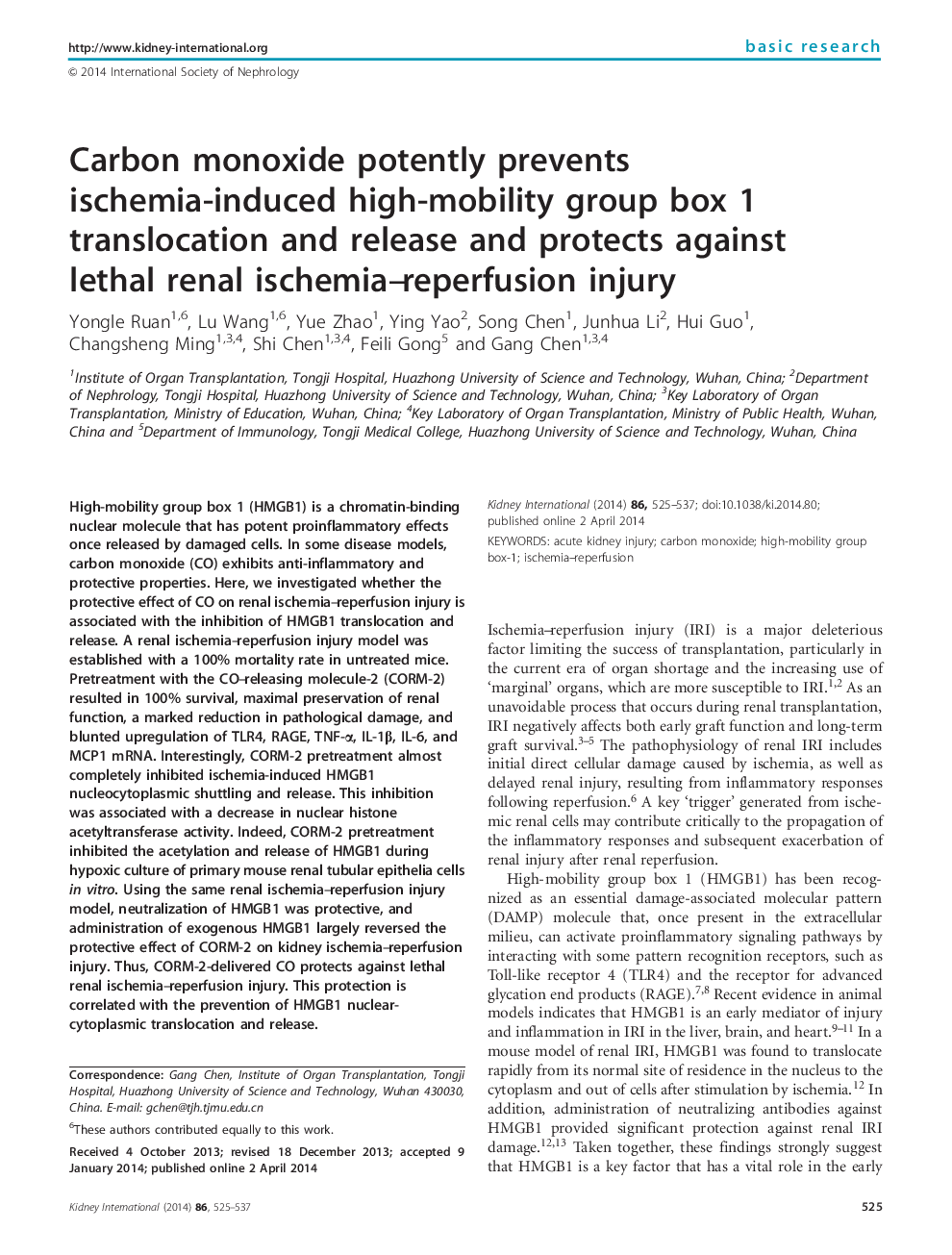| Article ID | Journal | Published Year | Pages | File Type |
|---|---|---|---|---|
| 6160724 | Kidney International | 2014 | 13 Pages |
Abstract
High-mobility group box 1 (HMGB1) is a chromatin-binding nuclear molecule that has potent proinflammatory effects once released by damaged cells. In some disease models, carbon monoxide (CO) exhibits anti-inflammatory and protective properties. Here, we investigated whether the protective effect of CO on renal ischemia-reperfusion injury is associated with the inhibition of HMGB1 translocation and release. A renal ischemia-reperfusion injury model was established with a 100% mortality rate in untreated mice. Pretreatment with the CO-releasing molecule-2 (CORM-2) resulted in 100% survival, maximal preservation of renal function, a marked reduction in pathological damage, and blunted upregulation of TLR4, RAGE, TNF-α, IL-1β, IL-6, and MCP1 mRNA. Interestingly, CORM-2 pretreatment almost completely inhibited ischemia-induced HMGB1 nucleocytoplasmic shuttling and release. This inhibition was associated with a decrease in nuclear histone acetyltransferase activity. Indeed, CORM-2 pretreatment inhibited the acetylation and release of HMGB1 during hypoxic culture of primary mouse renal tubular epithelia cells in vitro. Using the same renal ischemia-reperfusion injury model, neutralization of HMGB1 was protective, and administration of exogenous HMGB1 largely reversed the protective effect of CORM-2 on kidney ischemia-reperfusion injury. Thus, CORM-2-delivered CO protects against lethal renal ischemia-reperfusion injury. This protection is correlated with the prevention of HMGB1 nuclear-cytoplasmic translocation and release.
Related Topics
Health Sciences
Medicine and Dentistry
Nephrology
Authors
Yongle Ruan, Lu Wang, Yue Zhao, Ying Yao, Song Chen, Junhua Li, Hui Guo, Changsheng Ming, Shi Chen, Feili Gong, Gang Chen,
